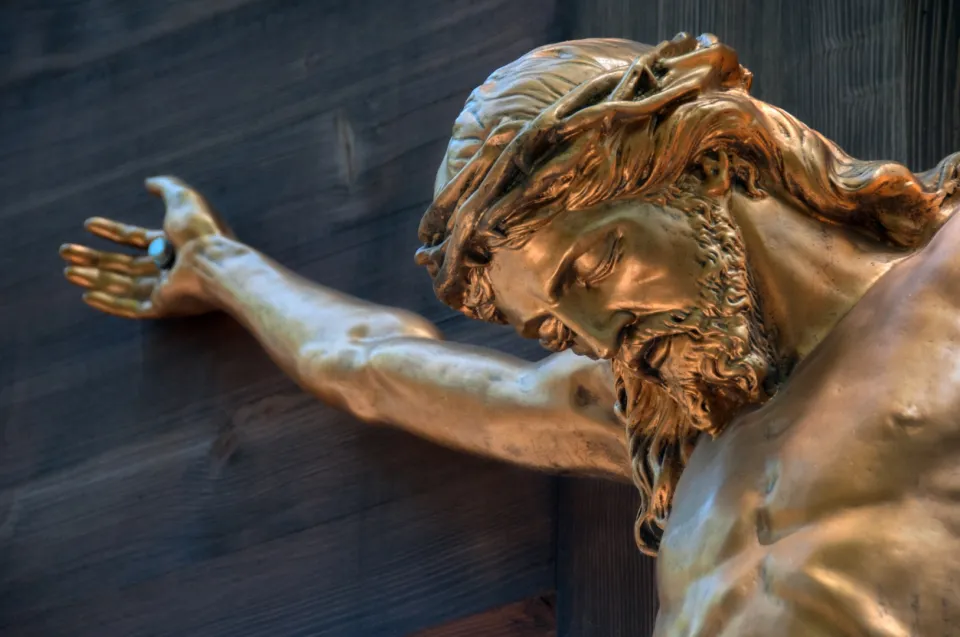“The Passion of the Christ” is one of the most profound and emotionally powerful stories in Christian tradition. It refers to the suffering, crucifixion, and resurrection of Jesus Christ, events central to the Christian faith. Whether studied in religious contexts, depicted in art, or shown in film, the Passion has held deep significance for billions of people around the world.
In this article, we’ll explore the story behind the Passion of Christ, its theological meaning, the cultural impact of Mel Gibson’s 2004 film The Passion of the Christ, and the lasting influence of this event on both Christian believers and global culture.
What Is the Passion of the Christ?
The term “Passion” comes from the Latin word passio, meaning “suffering.” In Christian theology, the Passion refers to the events leading up to and including the crucifixion of Jesus Christ, beginning with his arrest and concluding with his death on the cross and subsequent resurrection.
The Passion narrative is recounted in the four Gospels of the New Testament—Matthew, Mark, Luke, and John—and is traditionally remembered during Holy Week, especially on Good Friday. The story emphasizes Jesus’ sacrifice and the intense physical and emotional suffering he endured out of love for humanity, fulfilling the Christian belief in Jesus as the Savior.
The Key Events of the Passion
The Passion story begins in the Garden of Gethsemane, where Jesus prays, knowing the suffering he is about to face. His journey includes key moments that are fundamental to the Christian faith:
1. The Last Supper
Before his arrest, Jesus shares a final meal with his disciples, known as the Last Supper. This event is the foundation of the Christian practice of communion, symbolizing Jesus’ body and blood, offered for the redemption of mankind.
2. The Arrest in Gethsemane
Jesus is betrayed by Judas Iscariot, one of his disciples, and is arrested by Roman soldiers in the Garden of Gethsemane. This betrayal marks the beginning of his physical suffering.
3. The Trials of Jesus
Jesus is taken before several authorities, including the Jewish Sanhedrin, Pontius Pilate (the Roman governor), and King Herod. Despite Pilate’s initial hesitation, he ultimately orders Jesus to be crucified under pressure from the crowd.
4. The Scourging and Crown of Thorns
Before his crucifixion, Jesus is brutally scourged and mocked by Roman soldiers. They place a crown of thorns on his head, further humiliating him and inflicting immense pain.
5. The Crucifixion
Jesus is forced to carry his cross to Golgotha, the site of his execution. He is nailed to the cross and left to die a slow, agonizing death. His final words, “It is finished,” mark the completion of his mission to offer himself as a sacrifice for the sins of humanity.
6. The Resurrection
The Passion story does not end with Jesus’ death. According to Christian belief, three days after his crucifixion, Jesus rose from the dead, an event that is celebrated as Easter. The resurrection is a cornerstone of Christian faith, symbolizing victory over sin and death.
Theological Significance of the Passion
The Passion of the Christ holds deep theological significance for Christians, particularly because it reflects the core beliefs of redemption and salvation. Here are some key aspects of its religious meaning:
1. Sacrifice and Atonement
For Christians, Jesus’ suffering and death on the cross were an act of ultimate love and sacrifice. His death atones for the sins of humanity, offering salvation to those who believe in him. The idea of Jesus as a sacrificial lamb, willingly offering himself for the forgiveness of sins, is central to Christian theology.
2. Suffering and Human Condition
The Passion also speaks to the universal experience of suffering. Jesus’ physical and emotional agony resonates with those who endure pain, hardship, and loss. For Christians, his willingness to suffer for others sets an example of selflessness and love.
3. Victory Over Death
The resurrection of Jesus, which follows his crucifixion, represents the Christian belief in eternal life. By rising from the dead, Jesus is believed to have conquered death, offering the promise of eternal life to believers.
The Cultural Impact of “The Passion of the Christ” Film
In 2004, director Mel Gibson’s film The Passion of the Christ brought the story of Jesus’ suffering and crucifixion to the big screen in a visually intense and emotionally charged way. The film, which focuses almost entirely on the final 12 hours of Jesus’ life, became a global phenomenon, sparking discussions and debates about religion, history, and faith.
1. Box Office Success and Reception
The Passion of the Christ was an unprecedented success, grossing over $600 million worldwide, making it one of the highest-grossing R-rated films of all time. Despite being controversial due to its graphic depiction of violence and its portrayal of Jewish characters, the film resonated deeply with Christian audiences.
2. Religious and Social Debate
The film ignited widespread discussion, particularly around its portrayal of violence and its depiction of Jewish figures. Some critics argued that the film reinforced negative stereotypes about Jewish involvement in the crucifixion, while others praised its historical and theological accuracy. Religious leaders and scholars debated its merits, with many calling it a powerful evangelistic tool that brought the message of the Passion to modern audiences.
3. Emotional and Spiritual Impact
For many viewers, The Passion of the Christ had a profound emotional and spiritual impact. Its vivid depiction of Jesus’ suffering made the abstract concept of the Passion more tangible and personal. Many churches and Christian organizations used the film as a way to engage their communities in deeper reflection on the sacrifice of Jesus.
The Legacy of the Passion in Art and Culture
The Passion of the Christ has been depicted in countless works of art, literature, and music throughout history. Some of the most famous representations include:
1. Artistic Depictions
From the Renaissance to modern times, the Passion has inspired some of the most iconic works of art. Paintings like Caravaggio’s The Flagellation of Christ and Michelangelo’s The Pietà are powerful representations of Jesus’ suffering. These works aim to evoke both empathy and reflection on the sacrifice Jesus made for humanity.
2. Passion Plays
Passion plays, dramatic reenactments of the Passion of Christ, have been performed for centuries in Christian communities around the world. One of the most famous is the Oberammergau Passion Play in Germany, which has been performed since 1634 and attracts thousands of visitors every decade.
3. Music and Literature
The Passion has inspired composers and writers to create works that explore its themes of suffering, sacrifice, and redemption. Johann Sebastian Bach’s St. Matthew Passion is one of the most renowned musical compositions based on the Passion narrative. In literature, the Passion is explored in countless poems, hymns, and religious texts.
Conclusion
The Passion of the Christ is a story of suffering, sacrifice, and ultimate redemption that lies at the heart of Christian faith. It serves as a reminder of Jesus’ love for humanity, his willingness to endure pain for the sake of others, and the hope of eternal life through his resurrection.
Through films like The Passion of the Christ, art, music, and religious practices, the Passion continues to have a profound impact on both individual believers and global culture. Its message of sacrifice and salvation transcends time and remains relevant for people of faith around the world.
Whether you encounter the Passion through religious teachings, artistic interpretations, or cinematic representations, its story is a powerful reminder of the depth of love and the strength found in suffering.

